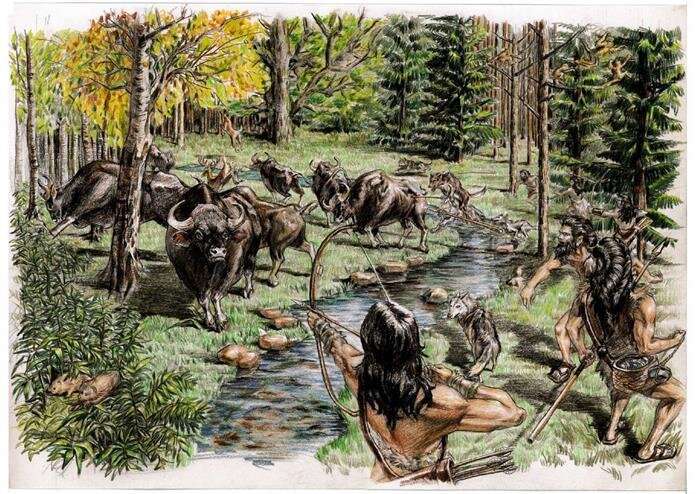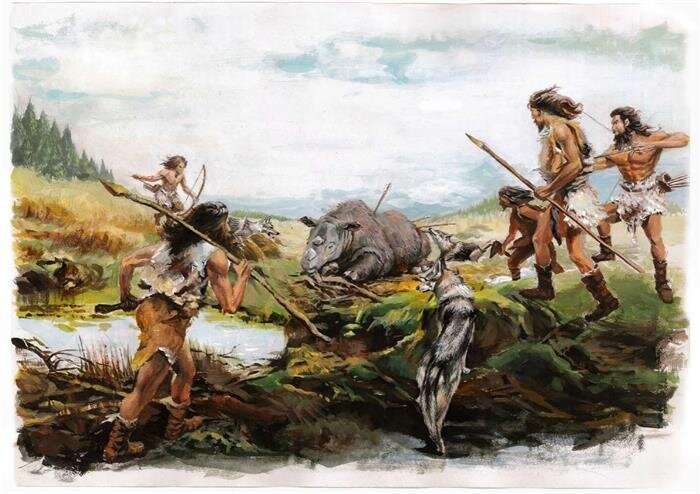Researchers find bovid and rhinocerous species in Tibetan Plateau about 5,200 years ago

A research team led by Prof. Su Bing from Kunming Institute of Zoology of the Chinese Academy of Sciences, collaborating with the researchers from Lanzhou University and Northwest Agriculture and Forestry University, performed a DNA investigation on approximately 5,200-year-old bovid and rhinoceros specimens from the Shannashuzha (SNSZ) site, and revealed that the tropical Bos gaurus and Dicerorhinus sumatrensis once roamed over Tibetan Plateau. The finding was published in PNAS on October 19.
The SNSZ is an early Majiayao archeological cultural site, dating to ~5,280-5,050 yBP and located in the marginal area of the northeastern Tibetan Plateau (NETP) at 2,323 m a.s.l (34°29'34.06"N, 104°4'24.54"E, Min County, Gansu Province of China). The proportion of the identified wildlife remains (~76%) far exceeded domestic animals (pig and dog) (~24%), while the plant remains were dominated by carbonized foxtail and broomcorn grains (over 80%). This suggests that both millet cultivation and game hunting occurred at SNSZ.
Bovid remains have been unearthed at SNSZ and they were tentatively recognized as Tibetan yak or domestic cattle. However, they are too degraded for species identification using morphological approaches. The species affiliation and population ecology of the prehistoric wild bovids and rhinoceros in the SNSZ site remained unknown.
By comparing the ancient bovid with the global bovid species genomic DNA, the researchers found that SNSZ bovid were genetically similar to modern Asian wild gaur and diverged from extant gaur and gayal lineages approximately 18,000 years ago. By comparing the ancient and extant rhinoceroses, they determined that SNSZ rhinoceroses were a sister clade of Sumatran rhinoceroses. The range of extant tropical gaurs and Sumatran-like rhinoceroses extended up to 34.29°N approximately 5,200 years ago. The enriched biodiversity of wildlife, thus contributed to the exploration of the Tibetan Plateau as one of the last habitats for hunting game in East Asia.

Additionally, population reconstructions revealed declining SNSZ gaur populations approximately 5,000 years ago, consistent with paleoclimatic records of the NETP transitioning to a cold/dry climate around that time. However, rhinoceroses roamed throughout the NETP between 8,000 to 6,000 years ago, revealing a warm and moist environment during that time. Radiocarbon dating of NETP archeological sites found an increase in human settlements with domestic animal pastures between 6,000 to 3,000 years ago.
The findings suggested that climatic change and human activities contributed to the disappearance of gaur and Sumatran-like rhinoceros from middle and high latitudes, leading to these animals southward migration or shrink to low latitude tropical regions, as well as wild to domesticated quickly animal species turnover occurred in NETP around 5,000 years ago.
Local wild large animals have been determined to be important prey in the NETP, where hunting game was a major subsistence strategy until the late Neolithic, and the prehistoric bovid remains are common in the NETP. This study marks the first ancient genomic DNA investigation of large animal remains which dating up to ~5,200 years ago from Tibetan Plateau, it enhances our understanding of the past interactions between climate change, biogeography, and human subsistence strategy.
Interactions among climate change, biogeography and human activity have remarkably strengthened since the late Pleistocene. Farmers diffused across the Old World with crops and livestock during the Neolithic period (~10,000 to 4,000 yBP), eventually affecting the biogeography in Eurasia. However, the impact of the geographical distribution of wildlife on human behavior during that period remains enigmatic.
More information: Ningbo Chen et al. Ancient genomes reveal tropical bovid species in the Tibetan Plateau contributed to the prevalence of hunting game until the late Neolithic, Proceedings of the National Academy of Sciences (2020). DOI: 10.1073/pnas.2011696117
Journal information: Proceedings of the National Academy of Sciences
Provided by Chinese Academy of Sciences




















